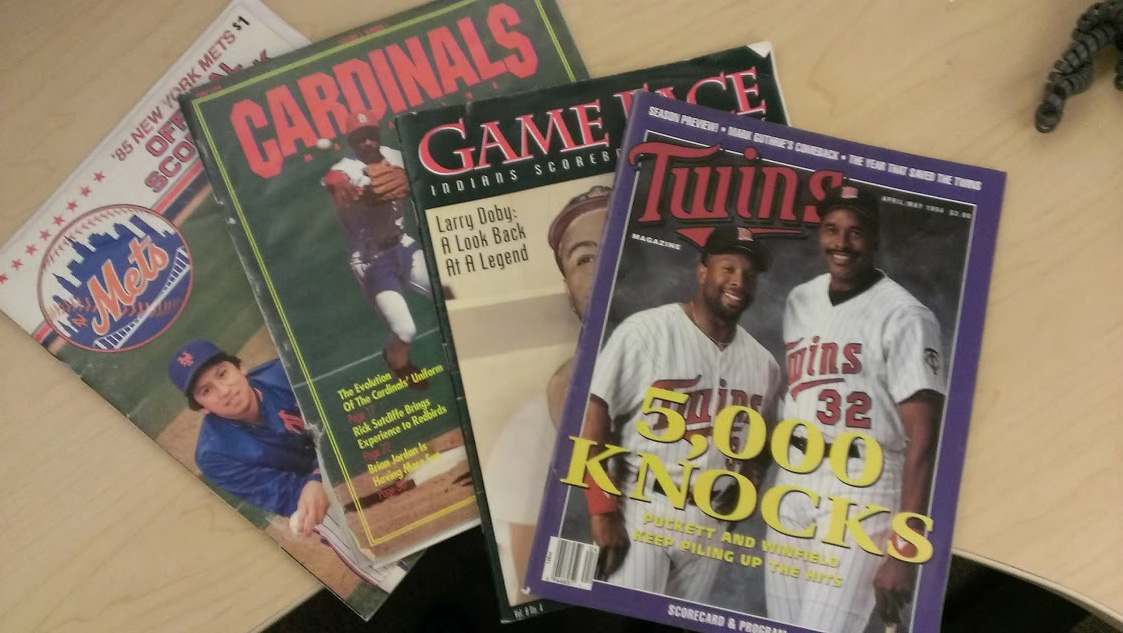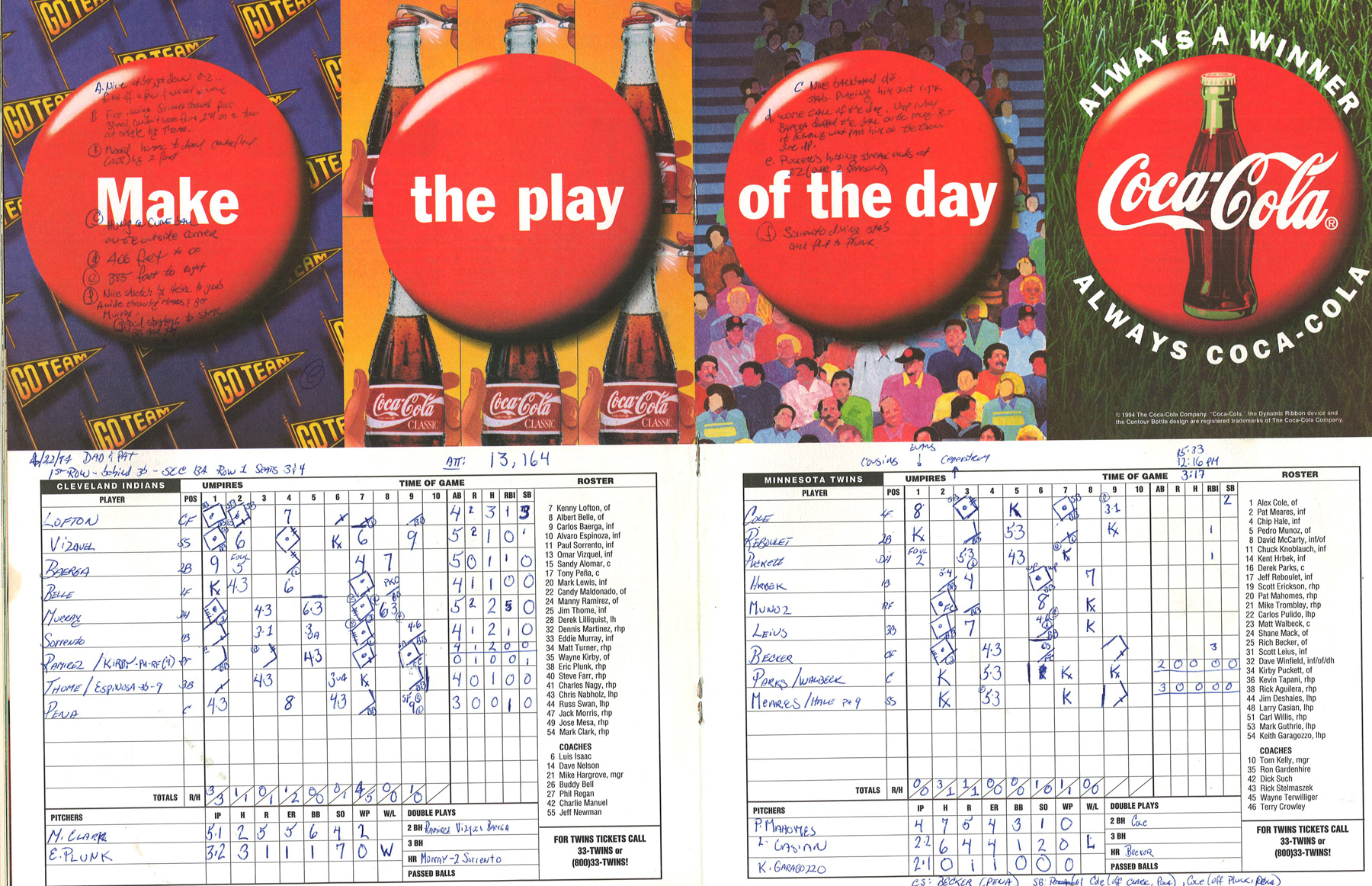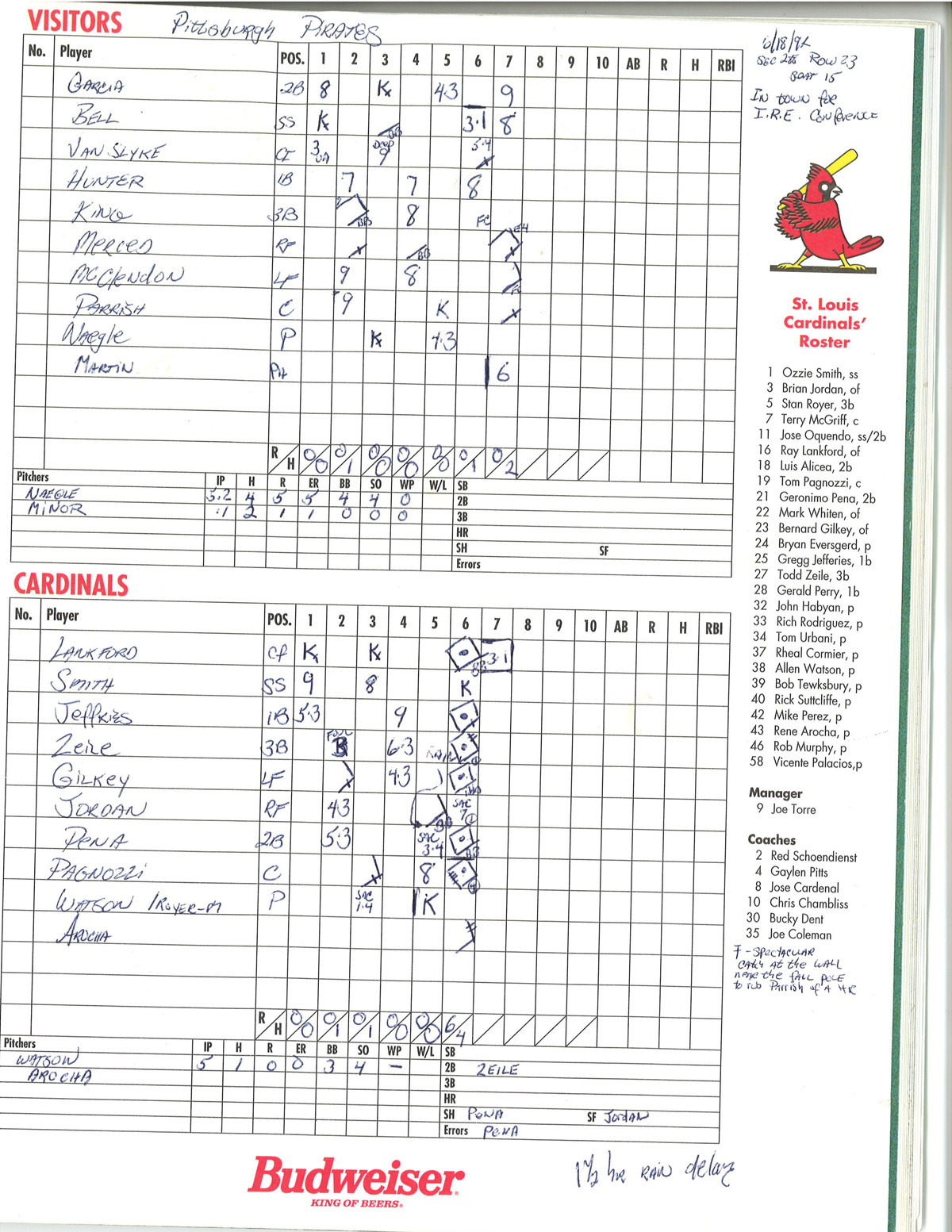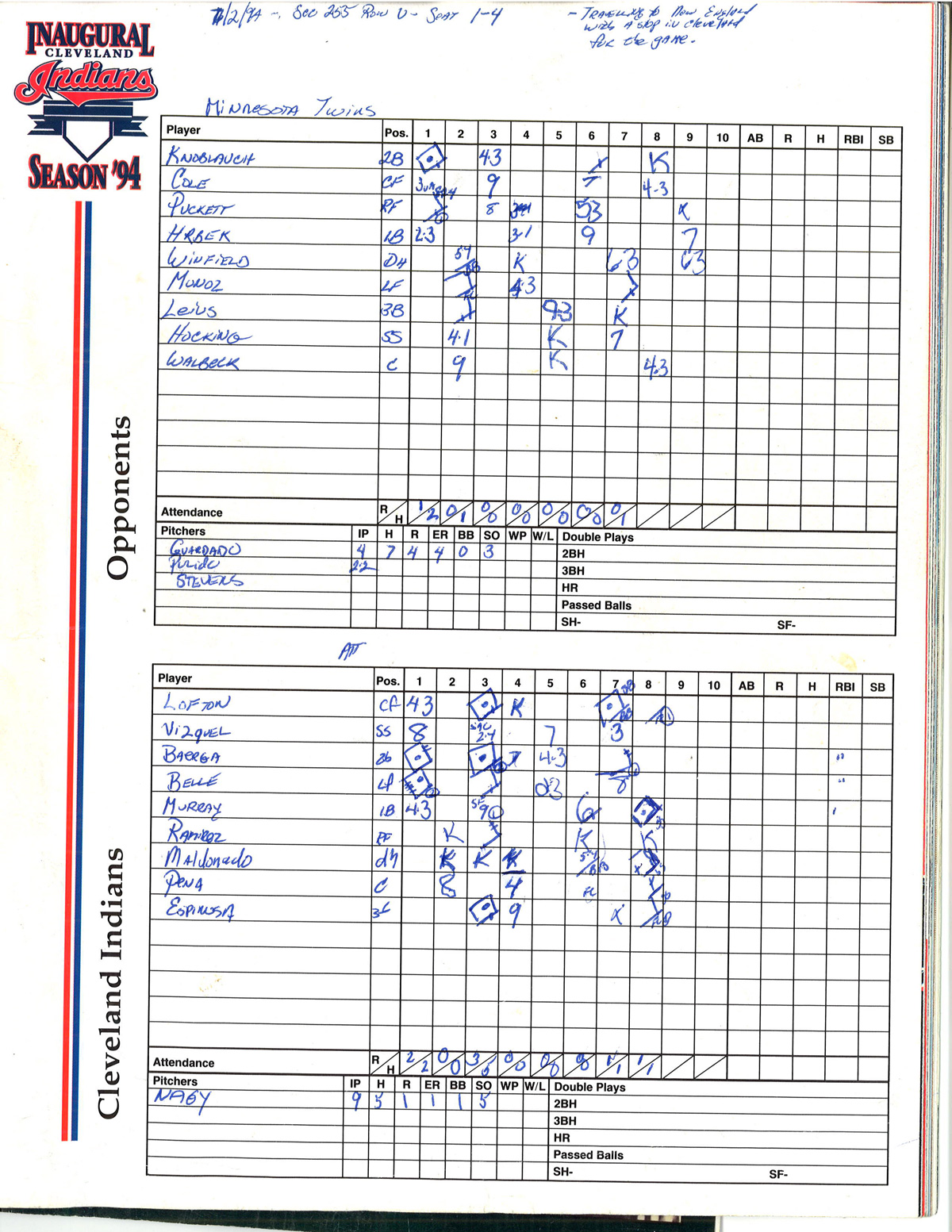There was a bit of a dust-up at the gate to Progressive Field in Cleveland a few weeks ago as we stood in line to get into the game against the Twins. A man had ducked out of line to buy a game program, only to find out no scorecard was included. True to his generation, he was distraught that another chip had appeared in the bedrock game of the nation. The scorecard, it seems, is dead.
Patrick Reusse told us as much Saturday in his excellent essay on nine baseball traditions that have disappeared.
“It is an art, and if you look around Target Field, you will find it to be almost lost,” he observed.
Curiously, documenting the demise of the lost art has suddenly gotten popular. Last Thursday, the New York Times considered the changing cultural landscape and found, predictably, generational reasons.
“The reason young people don’t do it is because the next generation is all about speed and efficiency, not about detail,” Yankee fan Stephan Loewenthil told the scribe.
Today, NPR’s Alva Noe, who writes a blog on science, joins in and makes a beautiful game more clinical than it needs to be:
Consider, first, that keeping score is not just a matter of recording the game. It is, rather, a way of thinking about the game. The score keeper asks, what is happening? Is that an earned run? Did the runner reach first on a fielder’s choice, or did he get a hit? Is that a sacrifice, or was the batter bunting for a hit? In order to keep score, you need to make these kinds of decisions. And in order to make these kinds of decisions you need to be closely engaged with the game. You need to pay attention. You need to understand what is going on. You need to have skill. You need to care.
The irony is that baseball score keeping is a pitch right in the wheelhouse of a younger generation, a generation that documents everything, usually with a cellphone. It’s a different way of taking pictures.
A commenter on the NPR blog captures the sentiment perfectly:
I have hand-written journals from my past that are like little time machines. That’s one way of keeping score. And it’s their imperfect nature that gives them character: the dog-eared pages, the changes in the slant and shape of the letters that reflect my mood at the time, a picture drawn in the margin, the wine and food stains.
I suppose I could have a nicely styled digital version, a blog or some such, but it would never ‘keep score’ with the same depth and breadth of my manual scribblings.
I also find it fascinating to read them years later and realize how much the past has changed, and keeps changing.
Today, I went to the Depository of All Things Important But Rarely Seen — the closet in the den — and dug around until I found these four scorecards I’d forgotten I had: Shea Stadium in 1985, Busch Stadium in St. Louis in 1994, Jacob’s Field in Cleveland in 1994, and the Metrodome in 1994.
Why I saved them, I don’t know, but each provided a unique snapshot of a moment for which I had no pictures.
July 24, 1985 was a day off for me when I worked in New York. It was a Thursday and the Mets had senior citizen discount day games on Thursdays back then. The scorecard reveals Pete Rose was playing. It was the last season in which he’d appear in more than 100 games. It also reveals the game was pretty dull, since I started sketching Shea Stadium. That must be the “art” Reusse was talking about.
The Twins-Indians game at the Dome in April ’94. The scorecard says I sat in Section 134. Row 1. Seats 3 & 4. Metrodome fans will recognize the location as the Twins bullpen:
The notes in the Coke logos reveal I was much more descriptive than I usually was (click image to enlarge). Kirby Puckett’s hitting streak ended at 22 that day, I noted. But you know what I remember? My son dropping his baseball glove into the Twins’ bullpen. Don’t ask me why. That’s baseball.
This game between the Pirates and Cardinals was my first exposure to St. Louis baseball, a baseball town like no other. The scorecard says I was in town for a conference of investigative reporters. But the scoring stops in the 7th inning.
The game was delayed by rain — lightning really. I was sitting in the last row at the very top of the old Busch Stadium when the lightning bolt hit not far away. The players ran off the field, the 42,000 people scurried for cover. I stayed after thinking, “I can’t think of a better way to go than being hit by lightning at a baseball game.” I should’ve written that down.
And this one from Jacob’s Field brought back particular memories. We had moved to Minnesota just two years earlier and we were driving back to Massachusetts, stopping first to see the new ballpark in Cleveland and meet other fans I’d met online (this was the early days of the web). I wrote that we sat in Section 255 Row U, Seats 1-4, a skyview spot to watch the ascension of one franchise, and the pitiful decline of another.
A few weeks after this game, baseball went on strike and the season was never completed.
But there was something more significant to this game. It was the last time I ever bought a scorecard and kept score at a baseball game.





